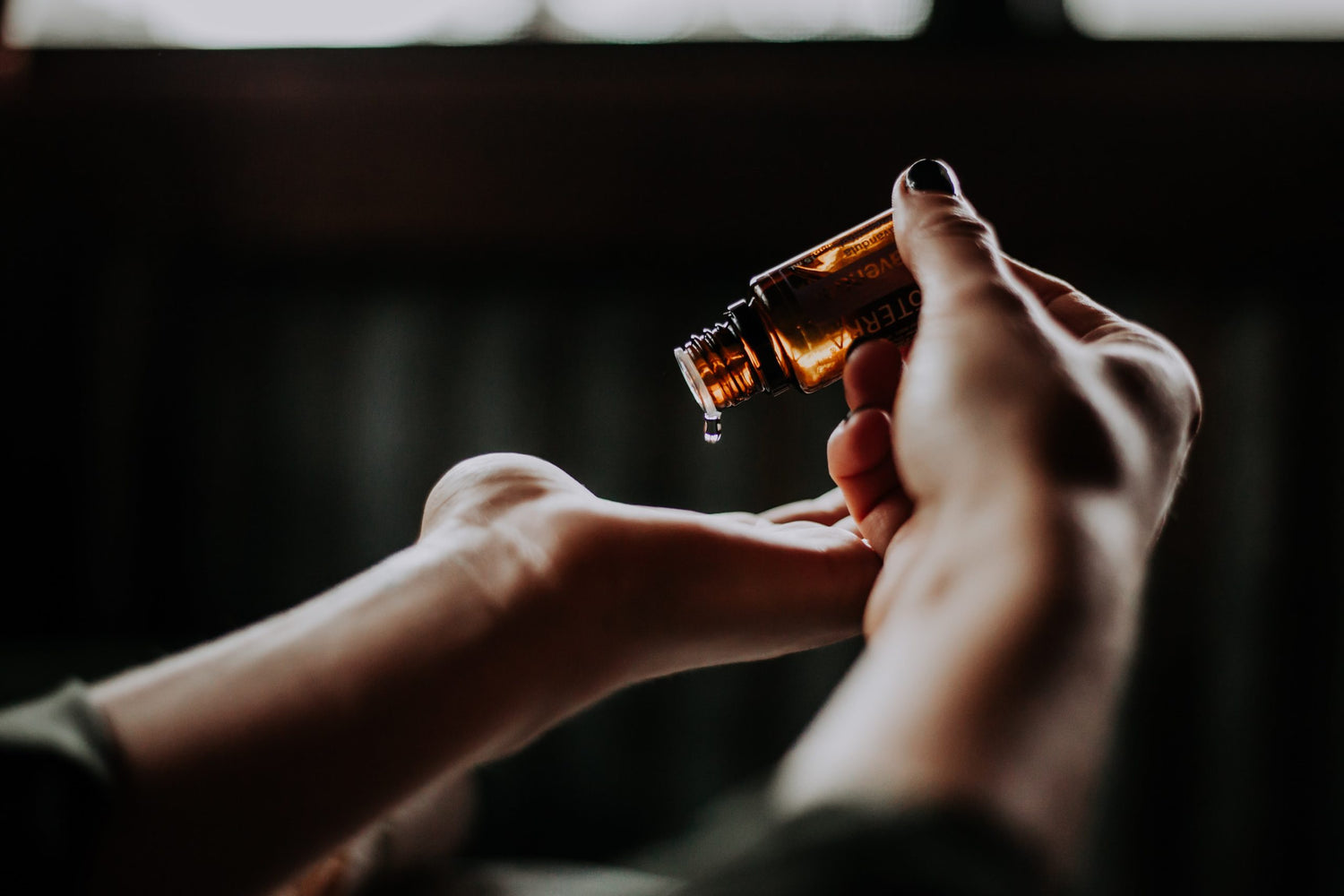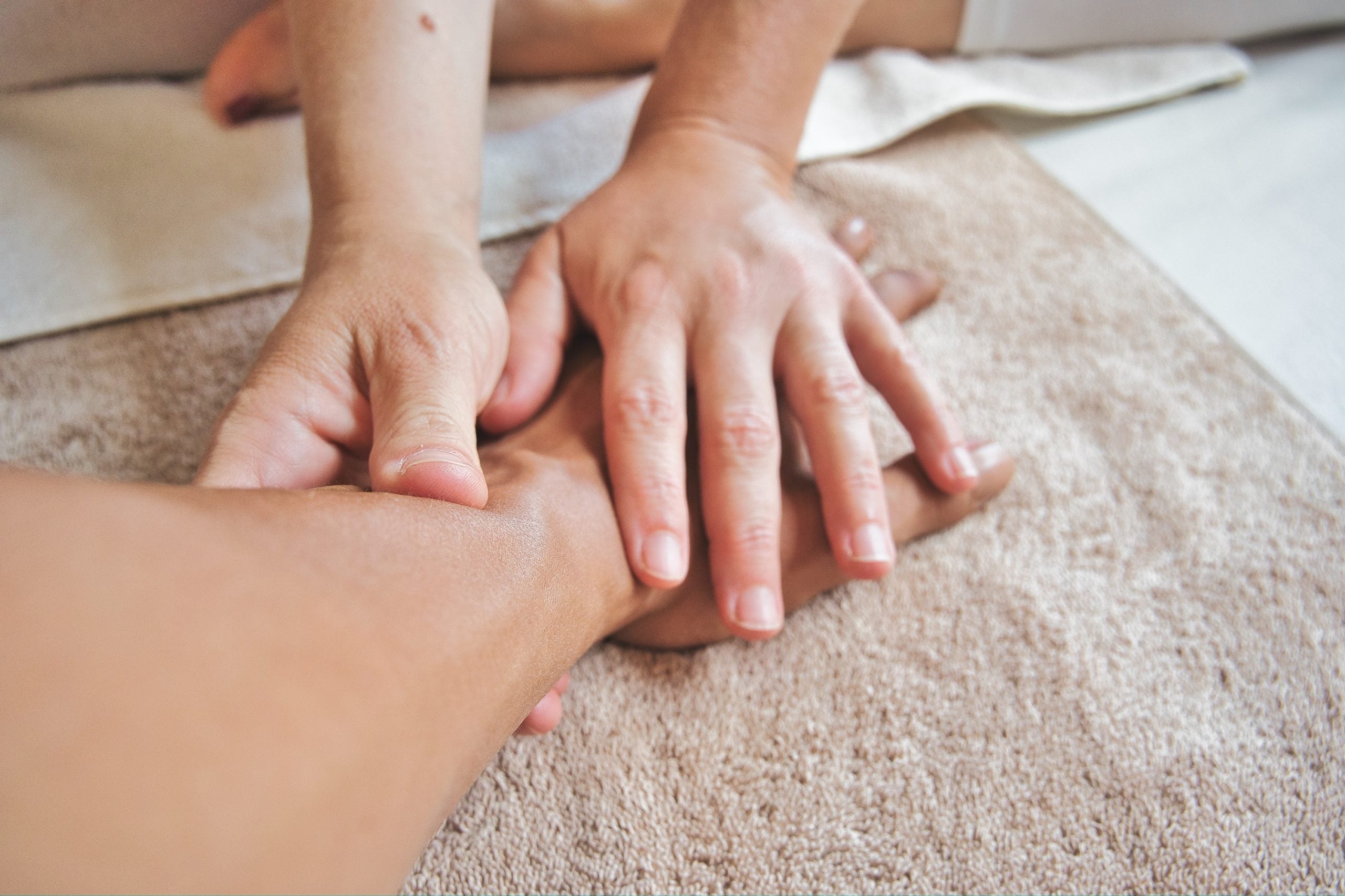Along with tools like migraine glasses, cold packs, and keeping a migraine diary, a lot of people use essential oils and aromatherapy to make their condition more bearable.
Many people use aromatherapy to relieve stress, and migraines may be stress-related. But is that enough reason to use essential oils for migraine?
There isn’t a lot of research that supports the effectiveness of essential oils for migraine. However, that doesn’t mean there’s no value in trying them to help you feel better.
Let’s take a look at some of the essential oils purported by some for headache relief. Along with the ways they might help, we’ll dive into how they are used, along with their limitations.
Why You Should Proceed With Caution
Before we look at specific varieties you might want to try, there are some general things to keep in mind about using essential oils for migraine.
If strong odors tend to trigger or exacerbate your migraines, proceed with caution.
Essential oils can smell pretty strong, especially if you take a whiff straight from an undiluted bottle. Even if you love the scent of lavender, for example, using it during a migraine attack could bother you. There is a chance you’ll need to avoid certain oils.
You should also know that most essential oils need to be diluted before use. This could mean using a carrier oil, such as almond or sunflower. It could also mean adding a few drops of an oil to water before breathing in the vapors.
Now let’s look at a few specific essential oils for migraine.
List of Essential Oils for Migraine
Lavender

Lavender oil is sometimes used in aromatherapy to help reduce migraine pain.
Supporting Research
There is some research to show that essential oil of this blue-violet flowering plant could reduce stress and anxiety. If your migraines are triggered or worsened by those things, lavender oil might be worth a try.
In 2012, European Neurology published a study of lavender and migraine. Migraineurs inhaled the scent of lavender essential oil for 15 minutes during an attack. Those who did so saw their headache severity reduced more than the control group who didn’t use the oil.
How to Use
To use lavender essential oil for migraine, add a few drops to a pot of boiling water and breathe in the vapors. Just be careful not to burn yourself on the steam.
You can also rub lavender oil into your skin, but keep it away from your eyes and mouth, since it’s toxic if you ingest it. There is some argument as to whether lavender needs to be diluted before using it topically. It’s probably better to dilute it to see how your skin reacts, and then gradually decrease the amount of carrier oil to see how it affects you.
Peppermint
If you’re looking to use essential oils for migraine, peppermint could be one of your strongest bets.
Supporting Research
Peppermint oil has a history of relieving nerve and muscle pain as well as headache. This is because it contains menthol, which has historically been used as an analgesic pain reliever. It works to numb pain as it triggers pain fibers. That might sound counterintuitive when you’re trying to reduce pain, but triggering the pain fibers actually helps the menthol displace the actual pain sensation.
Have you ever used a cooling menthol-based rub when you have a cold, or a muscle ache? If you remember the tingly feeling you got, you can see how this might be effective. Wouldn’t you rather tingle than hurt? The menthol in peppermint oil also has a calming effect on many people, which could reduce your perception of pain or anxiety.
Peppermint oil has been shown helpful for tension headaches. In fact, the German medical journal, Der Schmerz (Pain) published a review in 2016 that identified peppermint as oil a standard treatment for acute headaches.
How to Use
Peppermint oil is used by inhaling the vapors. Like lavender, you can add a few drops to boiling water and breathe in the steam. It can also be applied topically, but will likely burn you if you don’t dilute it first. Some even take peppermint essential oil by mouth in very small amounts, such as stirring 1 or 2 drops into a cup of hot water.
Frankincense
Frankincense oil is another essential oil for migraine that many find soothing and relaxing. Its calming effects could ease stress, which could make you feel better during a migraine.
Supporting Research
There is actually research that shows frankincense oil and its anti-inflammatory properties may be an effective pain reliever during a cluster headache. In fact, some medical professionals who treat migraine have used standardized formulations of frankincense oil on patients who respond well to NSIADs. Those standardized formulations can be made by a compounding pharmacy.
In a 2019 study , frankincense essential oil was found to reduce stress in mice, as well as improve their sleep. As you probably know, stress and lack of sleep can play a role in migraines.
How to Use
Try adding a few drops of frankincense oil to a hot bath, or using an oil diffuser or vaporizer. You can apply it to the skin as long as you dilute it with a carrier oil, with 2 drops of carrier to 1 drop of frankincense.
Rosemary

If you love the smell of pine trees, you will probably like rosemary. But like a lot of other essential oils for migraine, its strong scent could be a trigger for some, so proceed with caution.
Supporting Research
One small study turned up evidence that rosemary oil could reduce migraine headaches. Published in 2020 in the Iranian Journal of Basic Medical Sciences , the study cites rosemary as an analgesic for migraines and headaches, as well as a potential remedy for anxiety.
Another study suggests rosemary oil could have the potential for easing pain, especially when combined with traditional analgesic drugs. Additional evidence was published in a 2015 systematic review of essential oils. The review stated that rosemary oil may have properties for relieving pain and inflammation.
How to Use
Rosemary oil is commonly used in aromatherapy, and can be applied to the skin if diluted. Be sure to follow the recommendations on the bottle. Rosemary is also used in many recipes.
Eucalyptus
If you get migraines or headaches triggered by sinus trouble, check out eucalyptus oil. Research shows it could help open sinus passages to clear out some of that pressure.
Supporting Research
A study conducted in 2013 revealed that inhaling the vapors of eucalyptus oil could reduce blood pressure and even relieve pain. It’s also one of the essential oils known for its soothing properties, which may help alleviate stress-related headaches. Moreover, it has potential as an anti-inflammatory .
How to Use
Like peppermint oil, eucalyptus tends to burn when applied full-strength to the skin. Dilute it by mixing 1 teaspoon of eucalyptus oil with 4 tablespoons of a carrier oil, like coconut or olive. You can also add a few drops to boiling water to create steam that carries the vapors.
Chamomile
Because of chamomile’s relaxing properties, it makes sense that chamomile oil could soothe tension that may be linked to migraines.
Supporting Research
A clinical study was conducted using 100 adults with migraine without aura. One group rubbed 2mL of chamomile oil on their temples, behind their ears, and on their forehead. Another group rubbed the same amount of a placebo on the same areas.
Within 2 hours, nearly 30% of those using chamomile reported no more migraine pain. Only 2% of the placebo group reported this. Participants applying the chamomile oil also experienced improvements in other symptoms like nausea and photophobia.
How to Use
Chamomile tea is widely available, and many people use it to relax their body or calm their nerves. If you have a diffuser, you can use chamomile essential oil that way — just follow the directions that came with your diffuser.
A spray can also be made by diluting chamomile oil, using 10-15 drops of the oil per ounce of water. Use a glass spray bottle since the oil will break down the plastic over time.
Risks of Using Essential Oils
They Are Not a Replacement for Doctor-Guided Therapies
If you choose to use essential oils for migraines, you should seek the guidance of your doctor. Essential oils are not a replacement for doctor-guided therapies. Like a lot of natural remedies, they are best used as a complement to your treatment plan.
Essential oils have potential as a natural remedy, but are not a magical cure totally absent of risk. Let’s talk about a few of those risks.
Some Essential Oils May Trigger A Migraine
As we mentioned before, if your migraines are sometimes triggered by strong scents, essential oils might not be for you. Be warned that there could be some trial and error in finding oils that help you and don’t trigger an attack.
Be Careful of Fillers
You want to be careful about your sources for essential oils. For many migraineurs, artificial scents are a big trigger. Look for 100% pure essential oil without fillers instead of a synthetic fragrance oil you might find in the supermarket, which are usually full of artificial stuff.
Since essential oils aren’t drugs, there is no FDA regulation or grading certification to look for. However, you can check the label for the latin names of the oil. For example, the Latin name for lavender is lavandula angustifolia. Do a little research to make sure you can recognize those Latin names. If that’s the only ingredient, it should be a pretty good sign.
Risk of Potential Allergic Reactions
Especially if you tend to have allergies, be careful when trying new essential oils. When inhaling the vapors of an essential oil, you could end up with allergy symptoms like runny nose, congestion, or itchy eyes. When using oils topically, you could get allergic reactions like hives, itchy skin, or swelling.
If you think you’re having an allergic reaction to an essential oil, stop using it and talk to your allergist.
Risks to Pets
If you have pets, some essential oils are a no-go to have around them, even in a diffuser. For example, the ASPCA asserts that cats are particularly sensitive, and that you shouldn’t have a cat in the room where an oil is being diffused. Dogs may not be as sensitive as cats, but remember that their sense of smell is many times stronger than yours.
If you have pets, you’d be wise to do a little homework on the guidelines for essential oils in regards to your furry friend.
How Essential Oils Are Made
There are a couple of different processes used in making essential oils. Knowing the basics might help you know what to look for.
Steam Distillation
This is the most common method used for collecting the oils, but it doesn’t work on every type of plant. Long story short, it works by injecting very hot steam into a still that contains the plant, causing the plant to break down so that oils can be condensed and isolated.
Solvent Extraction
This is a quick, less expensive method that doesn’t produce 100% pure essential oils. Solvents are used to dissolve the plant matter. Those solvents could be ethanol, alcohol, or sometimes petroleum. Some of those solvents may end up in the oil, compromising their purity.
Pressing
Pressing is commonly used for citrus oils, and presses the oils out of the rind of the fruit. After the pressing, the liquid and plant matter is separated from the oil.
Packaging
However the oil is made, look for oils in a dark glass bottle. They’ll usually come in amber or dark blue glass. The dark bottles protect the oils from being deteriorated by ultraviolet light. Amber glass is best, but if you buy oils in dark blue bottles, just be sure to store them in a dark place. The darker the environment, the better the protection.
The Essential Takeaway
Chosen carefully, some essential oils do have potential for helping you during a migraine. Since quality is extremely important, make sure you read the labels carefully.
There is no best essential oil for migraine. But as a migraine sufferer, there could be a best essential oil for migraine for you on a given day. The key is to cautiously try out the different options to see how they affect your symptoms.
While there isn’t a lot of research on essential oils for migraine relief specifically, they could help you relax, ease tension, and even bring a little pain relief. Combined with other natural migraine tools, such as Axon Optics glasses, you could be better equipped to handle your condition.






